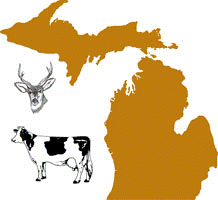Wildlife Disease and Zoonotics
Date of this Version
2005
Abstract
Infectious diseases can bring about population declines and local host extinctions, contributing significantly to the global biodiversity crisis. Nonetheless, studies measuring population-level effects of pathogens in wild host populations are rare, and taxonomically biased toward avian hosts and macroparasitic infections. We investigated the effects of bovine tuberculosis (bTB), caused by the bacterial pathogen Mycobacterium bovis, on African buffalo (Syncerus caffer) at Hluhluwe-iMfolozi Park, South Africa. We tested 1180 buffalo for bTB infection between May 2000 and November 2001. Most infections were mild, confirming the chronic nature of the disease in buffalo. However, our data indicate that bTB affects both adult survival and fecundity. Using an age-structured population model, we demonstrate that the pathogen can reduce population growth rate drastically; yet its effects appear difficult to detect at the population level: bTB causes no conspicuous mass mortalities or fast population declines, nor does it alter host-population age structure significantly. Our models suggest that this syndrome—low detectability coupled with severe impacts on population growth rate and, therefore, resilience—may be characteristic of chronic diseases in large mammals.



Comments
Published in Ecology, 86(9), 2005, pp. 2258–2264.